 W
WAlgorithms + Data Structures = Programs is a 1976 book written by Niklaus Wirth covering some of the fundamental topics of computer programming, particularly that algorithms and data structures are inherently related. For example, if one has a sorted list one will use a search algorithm optimal for sorted lists.
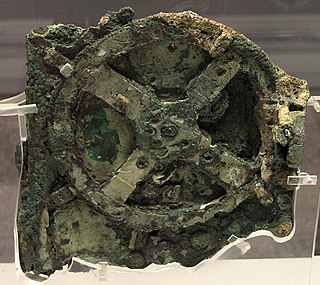 W
WThe Antikythera mechanism is an ancient Greek hand-powered orrery, described as the first analogue computer, the oldest known example of such a device used to predict astronomical positions and eclipses for calendar and astrological purposes decades in advance. It could also be used to track the four-year cycle of athletic games which was similar to an Olympiad, the cycle of the ancient Olympic Games.
 W
WAn aperture card is a type of punched card with a cut-out window into which a chip of microfilm is mounted. Such a card is used for archiving or for making multiple inexpensive copies of a document for ease of distribution. The card is typically punched with machine-readable metadata associated with the microfilm image, and printed across the top of the card for visual identification; it may also be punched by hand in the form of an edge-notched card. The microfilm chip is most commonly 35mm in height, and contains an optically reduced image, usually of some type of reference document, such as an engineering drawing, that is the focus of the archiving process. Machinery exists to automatically store, retrieve, sort, duplicate, create, and digitize cards with a high level of automation.
 W
W"As We May Think" is a 1945 essay by Vannevar Bush which has been described as visionary and influential, anticipating many aspects of information society. It was first published in The Atlantic in July 1945 and republished in an abridged version in September 1945—before and after the atomic bombings of Hiroshima and Nagasaki. Bush expresses his concern for the direction of scientific efforts toward destruction, rather than understanding, and explicates a desire for a sort of collective memory machine with his concept of the memex that would make knowledge more accessible, believing that it would help fix these problems. Through this machine, Bush hoped to transform an information explosion into a knowledge explosion.
 W
WBitcoin is a cryptocurrency, a digital asset designed to work as a medium of exchange that uses cryptography to control its creation and management, rather than relying on central authorities. It was invented and implemented by the presumed pseudonymous Satoshi Nakamoto, who integrated many existing ideas from the cypherpunk community. Over the course of bitcoin's history, it has undergone rapid growth to become a significant currency both on- and offline. From the mid 2010s, some businesses began accepting bitcoin in addition to traditional currencies.
 W
WThe C.mmp was an early multiple instruction, multiple data (MIMD) multiprocessor system developed at Carnegie Mellon University (CMU) by William Wulf (1971). The notation C.mmp came from the PMS notation of Gordon Bell and Allen Newell, where a central processing unit (CPU) was designated as C, a variant was noted by the dot notation, and mmp stood for Multi-Mini-Processor. As of 2020, the machine is on display at CMU, in Wean Hall, on the floor nine.
 W
WPaul E. Ceruzzi is curator emeritus at the Smithsonian's National Air and Space Museum in Washington, D.C.
 W
WThe term "computer", in use from the early 17th century, meant "one who computes": a person performing mathematical calculations, before electronic computers became commercially available. Alan Turing described the "human computer" as someone who is "supposed to be following fixed rules; he has no authority to deviate from them in any detail." Teams of people, often women from the late nineteenth century onwards, were used to undertake long and often tedious calculations; the work was divided so that this could be done in parallel. The same calculations were frequently performed independently by separate teams to check the correctness of the results.
 W
WComputer: A History of the Information Machine is a history of computing written by Martin Campbell-Kelly and William Aspray first published in 1996. It follows the history of "information machines" from Charles Babbage's difference engine through Herman Hollerith's tabulating machines to the invention of the modern electronic digital computer. A revised 2nd edition published in 2004 included new material on the Internet and World Wide Web, while the updated 3rd edition published in 2013 includes contributions from historians Nathan Ensmenger and Jeffrey Yost. The 3rd edition extends the story to include recent phenomena such as social networking and revises the discussion of early history to reflect new insights from the literature.
 W
WConsidered harmful is a part of a phrasal template "X considered harmful". As of 2009, its snowclones have been used in the titles of at least 65 critical essays in computer science and related disciplines. Its use in this context originated in 1968 with Edsger Dijkstra's letter "Go To Statement Considered Harmful".
 W
WDelphi Forums is a U.S. online service provider and since the mid 1990s has been a community internet forum site. It started as a nationwide dialup service in 1983. Delphi Forums remains active as of 2020.
 W
WDrobe was a computing news web site with a focus on the RISC OS operating system. Its archived material is retained online, curated by editor Chris Williams.
 W
WWilliam Henry Gates III is an American business magnate, software developer, and philanthropist. He is best known as the co-founder of Microsoft Corporation. During his career at Microsoft, Gates held the positions of chairman, chief executive officer (CEO), president and chief software architect, while also being the largest individual shareholder until May 2014. He is one of the best-known entrepreneurs and pioneers of the microcomputer revolution of the 1970s and 1980s.
 W
WThe history of arcade games originated in 1971 with the introduction of Computer Space by Nolan Bushnell and Ted Dabney, the founders of Atari, Inc., who followed on that success the next year with Pong. The industry grew modestly until the release of Taito's Space Invaders in 1978 and Namco's Pac-Man in 1980, creating a Golden Age of arcade games that lasted through 1983. At this point, saturation of the market with arcade games led to a rapid decline in both the arcade game market and arcades to support them. Since then, there has been a steady recovery with novel games, including the birth of the fighting game genre with Capcom's Street Fighter II in 1991. The arcade industry continues to sustain itself on providing more immersive experiences in contrast to console and computer games, with the market having the most success in Japan and southeast Asia regions.
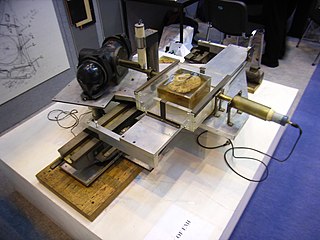 W
WThe history of X-ray computed tomography goes back to at least 1917 with the mathematical theory of the Radon transform In October 1963, William H. Oldendorf received a U.S. patent for a "radiant energy apparatus for investigating selected areas of interior objects obscured by dense material". The first clinical CT scan was performed in 1971 using a scanner invented by Sir Godfrey Hounsfield.
 W
WThe history of computing hardware covers the developments from early simple devices to aid calculation to modern day computers. Before the 20th century, most calculations were done by humans. Early mechanical tools to help humans with digital calculations, like the abacus, were referred to as calculating machines or calculators. The machine operator was called the computer.
 W
WHypertext is text displayed on a computer or other electronic device with references (hyperlinks) to other text that the reader can immediately access, usually by a mouse click or keypress sequence. Early conceptions of hypertext defined it as text that could be connected by a linking system to a range of other documents that were stored outside that text. In 1934 Belgian bibliographer, Paul Otlet, developed a blueprint for links that telescoped out from hypertext electrically to allow readers to access documents, books, photographs, and so on, stored anywhere in the world.
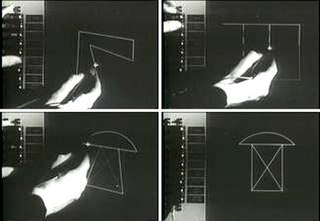 W
WThe history of the graphical user interface, understood as the use of graphic icons and a pointing device to control a computer, covers a five-decade span of incremental refinements, built on some constant core principles. Several vendors have created their own windowing systems based on independent code, but with basic elements in common that define the WIMP "window, icon, menu and pointing device" paradigm.
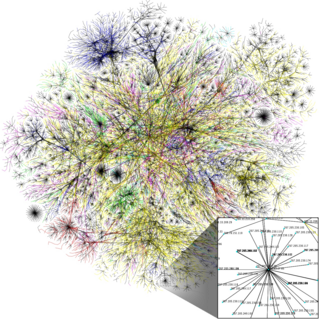 W
WThe history of the Internet has its origin in the efforts to build and interconnect computer networks that arose from research and development in the United States and involved international collaboration, particularly with researchers in the United Kingdom and France.
 W
WThe World Wide Web is a global information medium which users can access via computers connected to the Internet. The term is often mistakenly used as a synonym for the Internet itself, but the Web is a service that operates over the Internet, just as email and Usenet also do. The history of the Internet dates back significantly further than that of the World Wide Web.
 W
WThe IEEE Annals of the History of Computing is a quarterly peer-reviewed academic journal published by the IEEE Computer Society. It covers the history of computing, computer science, and computer hardware. It was founded in 1979 by the AFIPS, in particular by Saul Rosen, who was an editor until his death in 1991.
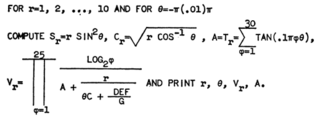 W
WThe Klerer–May System is a programming language developed in the mid-1960s, oriented to numerical scientific programming, whose most notable feature is its two-dimensional syntax based on traditional mathematical notation.
 W
WMemex is the name of the hypothetical electromechanical device that Vannevar Bush described in his 1945 article "As We May Think". Bush envisioned the memex as a device in which individuals would compress and store all of their books, records, and communications, "mechanized so that it may be consulted with exceeding speed and flexibility". The memex would provide an "enlarged intimate supplement to one's memory".
 W
WThe Mundaneum was an institution which aimed to gather together all the world's knowledge and classify it according to a system developed called the Universal Decimal Classification. It was developed at the turn of the 20th century by Belgian lawyers Paul Otlet and Henri La Fontaine. The Mundaneum has been identified as a milestone in the history of data collection and management, and as a precursor to the Internet.
 W
WThe Post Office Research Station was first established as a separate section of the General Post Office in 1909.
 W
WPunched tape or perforated paper tape is a form of data storage that consists of a long strip of paper in which holes are punched. It developed from and was subsequently used alongside punched cards, differing in that the tape is continuous.
 W
WRetrocomputing is the use of older computer hardware and software in modern times. Retrocomputing is usually classed as a hobby and recreation rather than a practical application of technology; enthusiasts often collect rare and valuable hardware and software for sentimental reasons. However, some do make use of it.
 W
WA sand table uses constrained sand for modelling or educational purposes. The original version of a sand table may be the abax used by early Greek students. In the modern era, one common use for a sand table is to make terrain models for military planning and wargaming.
 W
WThe history of computing in the Soviet Union began during the late 1940s, when the country began to develop MESM at the Kiev Institute of Electrotechnology in Feofaniya. Initial ideological opposition to cybernetics in the Soviet Union in general was overcome during the Khrushchev era, and computer production was officially encouraged.
 W
WThe Turing Guide, written by Jack Copeland, Jonathan Bowen, Mark Sprevak, Robin Wilson, and others and published in 2017, is a book about the work and life of the British mathematician, philosopher, and early computer scientist, Alan Turing (1912–1954).
 W
WThe history of video games goes as far back as the early 1950s, when academic computer scientists began designing simple games and simulations as part of their research or just for recreation. At M.I.T. in the 1960s, professors and students played games such as 3D tic-tac-toe and Moon Landing. These games were played on computers such as the IBM 1560, and moves were made by means of punch cards. Video games did not reach mainstream popularity until the 1970s and 1980s, when video arcade games and video game consoles using joysticks, buttons, and other controllers, along with graphics on computer screens and home computer games were introduced to the general public. During the 1970s, the first generation of home consoles emerged, including the popular game Pong and various "clones". The 1970s was also the era of mainframe computer games. The golden age of arcade video games was from 1978 to 1982. Video arcades with large, graphics-decorated coin-operated machines were common at malls and popular, affordable home consoles such as the Atari 2600 and Intellivision enabled people to play games on their home TVs. During the 1980s, gaming computers, early online gaming and handheld LCD games emerged; this era was affected by the video game crash of 1983. From 1976 to 1992, the second generation of game consoles emerged.
 W
WThe Vintage Computer Festival (VCF) is an international event celebrating the history of computing. It is held annually in various locations around the United States and various countries internationally. It was founded by Sellam Ismail in 1997. As of February 2015, most rights to the Vintage Computer Festival franchise are owned by the Vintage Computer Federation Inc., a 501(c)(3) educational non-profit organization.
 W
WThe West Coast Computer Faire was an annual computer industry conference and exposition most often associated with San Francisco, its first and most frequent venue. The first fair was held in 1977 and was organized by Jim Warren and Bob Reiling. At the time, it was the biggest computer show in the world, intended to popularize the personal computer in the home. The West Coast PC Faire was formed to provide a more specialized show. However, Apple Inc. stopped exhibiting at the West Coast Computer Faire, refusing to exhibit at any show other than COMDEX that also had PC-based exhibits. In 1983, Warren sold the rights to the Faire for US$3 million to Prentice Hall, who later sold it to Sheldon Adelson, the owner of Interface Group and COMDEX. In total, sixteen shows were held, with the last in 1991. After Warren sold the show, it had a few more good years, and then declined rapidly.
 W
WWhat the Dormouse Said: How the Sixties Counterculture Shaped the Personal Computer Industry, is a 2005 non-fiction book by John Markoff. The book details the history of the personal computer, closely tying the ideologies of the collaboration-driven, World War II-era defense research community to the embryonic cooperatives and psychedelics use of the American counterculture of the 1960s.